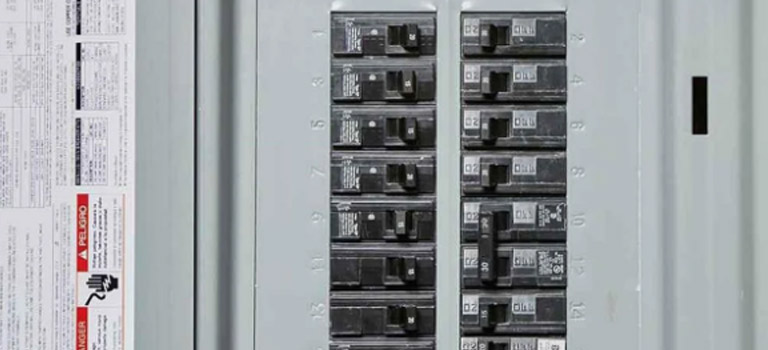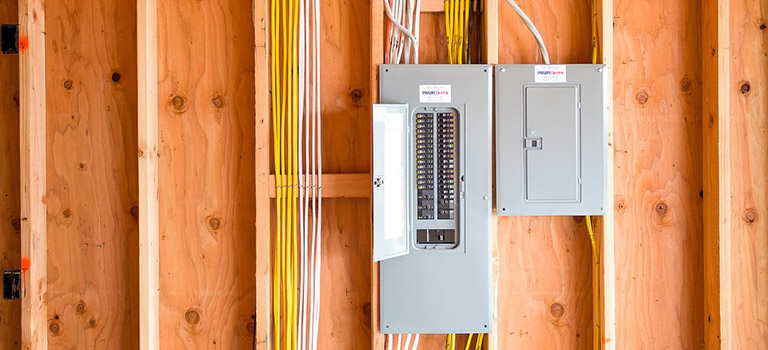Your electrical panel is the heart of your home’s electrical system. It takes the incoming power from the street and distributes it, as required, through the circuit breakers. When too much power is being drawn through a circuit breaker, it “trips” off to protect the wiring. An overloaded situation like this can cause excess stress/heat, resulting in melting, which creates smoke, along with fire. Your electrical panel not only powers all the things you love in your home, such as that big TV, it also protects the people you love most from dangerous situations.
Homes are not what they used to be. With the additions of fancy electronics, car chargers, high-end appliances, etc., your old panel may have a hard time keeping up with the demand. Despite the fact that most devices within a home are more energy efficient than ever, the issues stem from the fact that we are putting more and more items into the home that require electricity. If your panel is original, or is more than 10 years old, it is time to think about replacing it.
Does the size of my service affect my house?
Up until the mid 1930s, houses were fed with a mere 60 amps of power. Today, that wouldn’t even power your dryer and stove together. Older homes are typically supplied with 100 Amps, which is okay for a home under 2,000 square feet with average household appliances. If you were to build a home today, in 2019, the code would require you to be fed with a minimum of 200 Amps of power. If you have an undersized service, you may notice that your main circuit breaker constantly "trips" off and shuts down your house. If this is the case, you must upgrade your service to a larger size. If you are thinking of bringing any large appliances or equipment into your home, such as a secondary suite, EV car charger, hot tub, etc., you will need at least 200 amps of power.
How will I know my panel is on its way out?
What are the consequences?
Old electrical panels may start to show signs of malfunctioning in as little as 10 years of use. If your panel is 20 years or older, you should have it inspected and/or replaced by a licensed technician.

As dust, grease, and other particles float through the air, they make their way into your circuit breakers and can prevent them from tripping. Old circuit breakers are also at a risk of not functioning due to being worn out; this could either be from the breakers tripping on and off too many times or just simply having power run through them for years.

Some of the signs of a worn-out electrical panel will present themselves in other areas of the home, not just the panel. Here is a list of potential symptoms that could mean you need a new panel upgrade.
- You can see rust, corrosion, or moisture around the panel.
- There has been a fire or smoke damage in the home.
- You can hear crackling or popping sounds coming from the breaker box.
- The breakers are warm/hot to the touch.
- Half of your home is without power.
- Appliances do not seem to be operating at full power.
- Lights dim or flicker.
- Breakers fail to reset.
- You have fuses.
- Your home is fed with a 60-amp electrical service.
- Your home is fed with a 100-amp electrical service and breakers still trip.
- You are buying a new, large piece of equipment/appliance.
- There is no main breaker.
- Your metre is located inside, instead of outside, your home.
Specific panel manufacturers may be a threat to your home. Watch out!
Most of us are familiar with brands such as Siemens, Square D, and Eaton. What may look like a normal panel, may, in fact, be a threat to your home. Between 1950 and 1990, there were a few brands of panels that had, and still have, manufacturer's defects and bad designs. Here is a list of those brands:
Pushmatic Bulldog & ITE
Federal Pioneer Electric / Federal Pacific Electric
Zinsco
Any brand of fuse panel
Any brand of split-bus panel
(no main breaker)
If you have one of these panels in your home, call us immediately to have it replaced.
If you notice some of the above issues, or are planning an addition or renovation, call HomeSAFE today to schedule a free assessment.
CLICK HERE TO GET A QUOTE